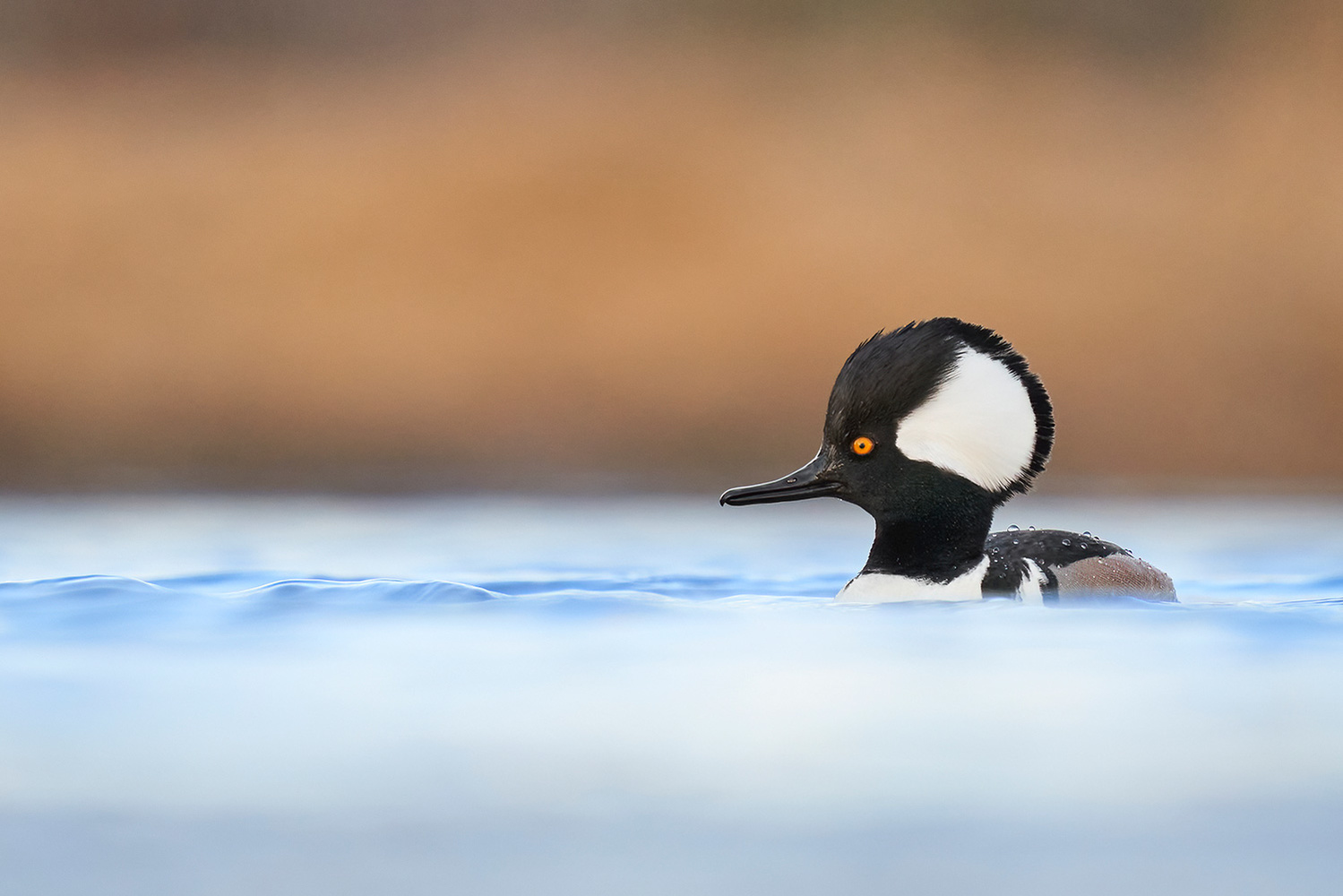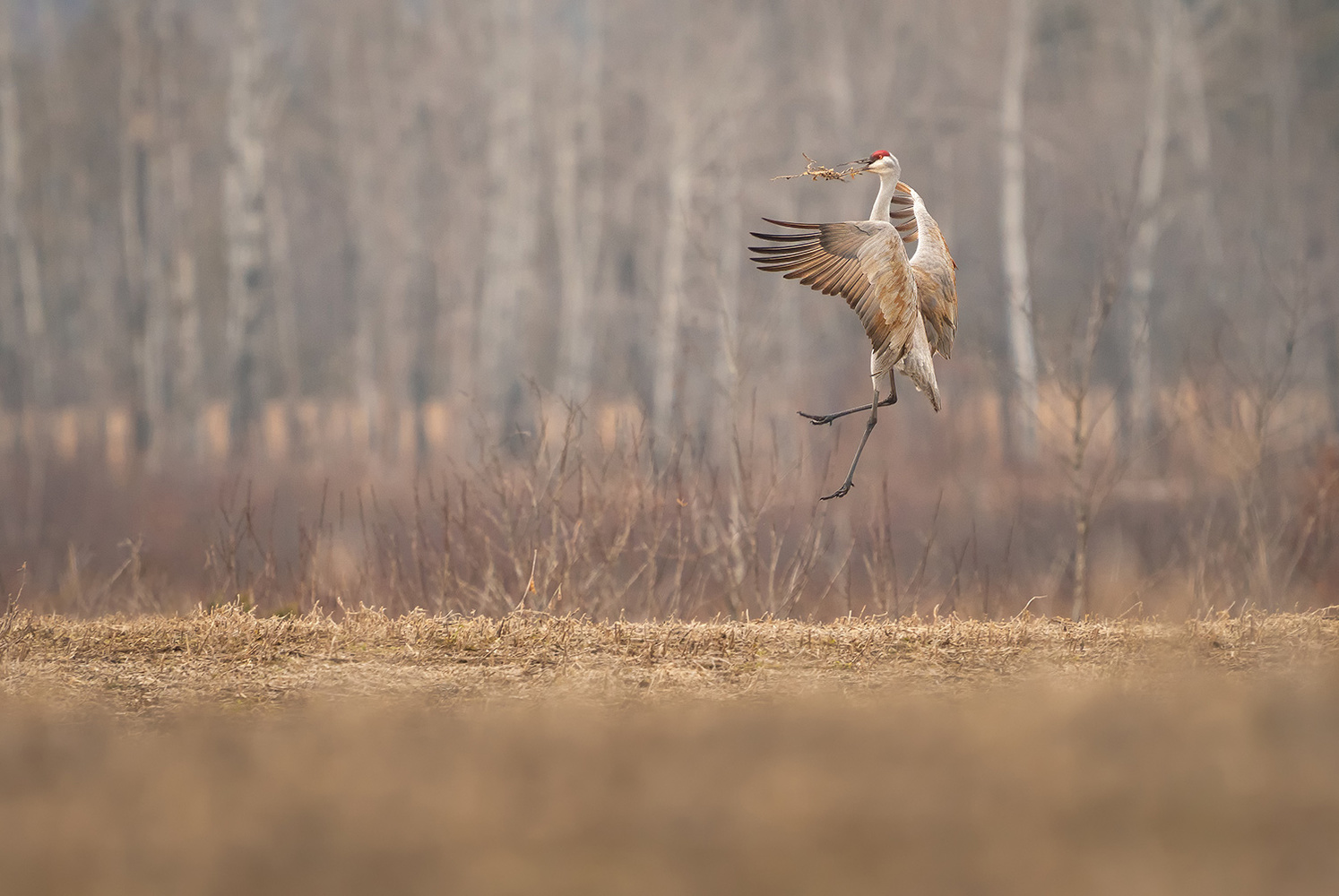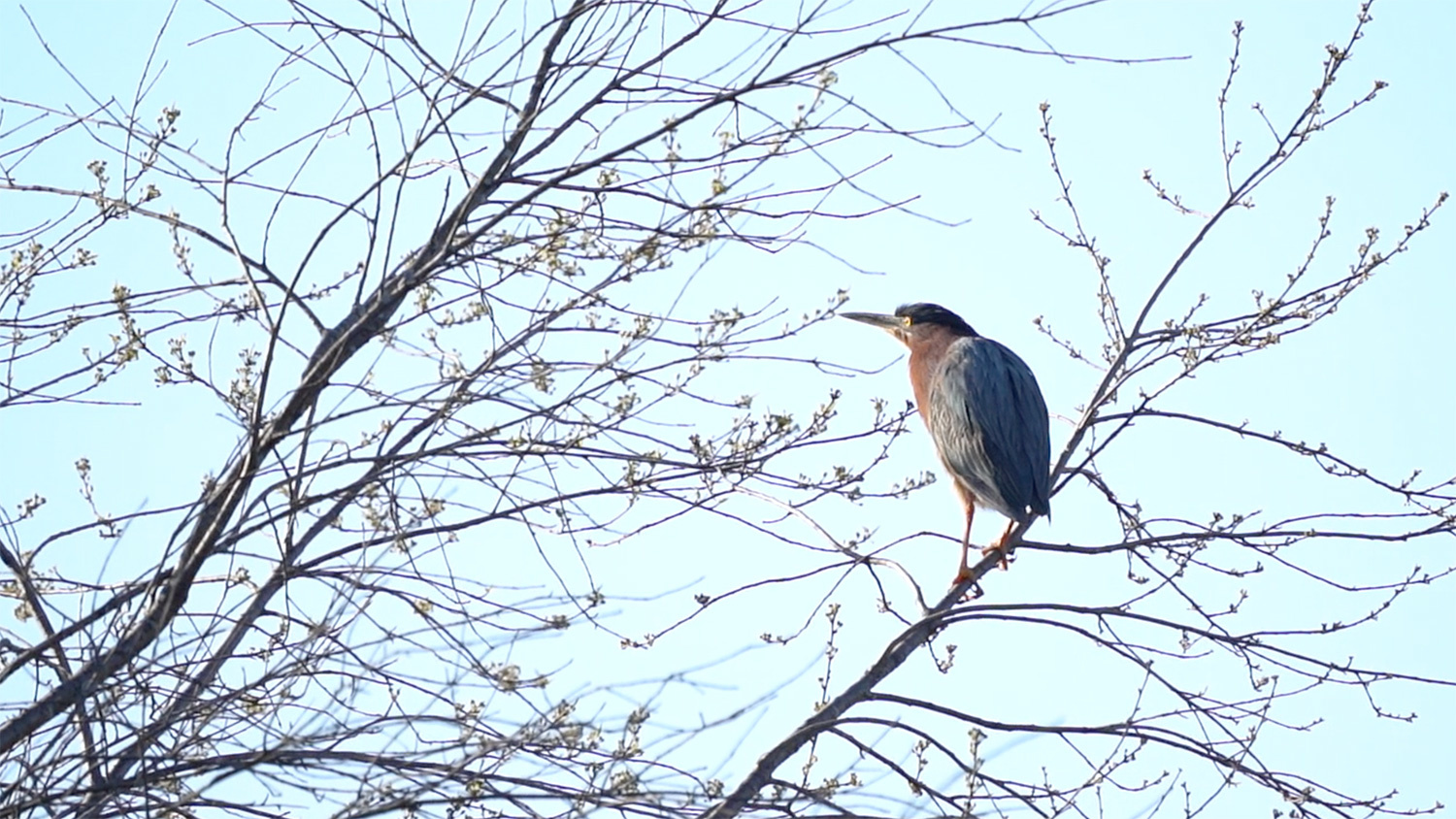One year ago today, Sony announced the FE 200-600mm super-telephoto zoom lens. I was one of the first people on the planet to use the lens before that announcement, and later in September 2019 I purchased my own copy and have used it extensively ever since.
Extensively may actually be too light of a word. The Sony FE 200-600mm f/5.6-6.3 G OSS is quite literally the only lens I own, and until I win the lottery to move on to the FE 600mm f/4 GM, I don’t see that changing. That does not mean, however, that it is a lens without faults; there are quite a few to be aware of that I will get into here. First, let’s start with everything that I have enjoyed day in and day out in my constant use.
What I Like
Why am I happy with this lens, and why do I recommend anyone else interested in it buy this lens too? Because above all else, at the end of the day I’m coming home with excellent images. An “excellent image” of course has many components, but when it comes down to the lens’ contribution to this I’m talking about the sharpness, resolving power, out of focus qualities, stabilization, and autofocus.


Sharpness
Before I bought the 200-600mm, I was a Canon shooter and owned a big white 500mm f/4L lens. The sharpness of that beast was off the charts, and yet I was swayed by the 200-600mm after testing it. The overall sharpness of each lens is neck and neck, but I will give it to Canon for being able to resolve fine feather details better. But not that much better, and that’s really impressive to me once you start to compare everything else between them.
Bokeh
The out of focus qualities of the 200-600mm is much better than it has any right to be. This is not Sony’s best take on what a 200-600mm can be, otherwise it would be part of the G Master series and use the G Master-only XA (extreme aspherical) lens elements. XA lens elements are Sony’s key to bokeh nirvana in their top-of-the-line lenses, and yet with the 200-600mm missing them I‘m still plenty pleased with the results.


Stabilization
Handholding 600mm and the field of view that comes with it is asking quite a bit before the effects of stabilization kick in. With this lens, and especially paired with many Sony cameras that have in-body image stabilization too, the old shutter speed trick of “1 over your focal length” is utterly wrong. Instead, it’s replaced by shooting the shutter speed that matches your subject and your intent. If your subject is sitting still, a 1/60 s shutter speed while handheld isn’t asking too much from the gear; that’s 10 times slower than that outdated rule.
Autofocus
I’m not sure I can recall a time where I thought to myself while using this lens, “This autofocus just isn’t keeping up!” I’ve seen my Sony cameras fail at picking up subjects or get lost trying to track something, but I’ve never pinpointed an autofocus issue squarely on the lens.
The one caveat to that is when it comes to pairing it with the FE 1.4x or FE 2x teleconverters. From a few different accounts, these teleconverters seem to have no negative effects while paired with the 400mm GM and 600mm GM lenses, and therefore I’m leaning to conclude that issues the 200-600mm has with these are on the lens side. The autofocus’ time to acquire a subject begins to slow with the 1.4x attached, and comes to a crawl with the 2x. Once they are in focus, they do an OK job with tracking as long as the subject is not too fast or too erratic.

Photographed using the FE 1.4x teleconverter.

The Finer Things
Moving past the optical qualities and its performance, there are a few other components to the lens that make it stand out.
- Internal zoom - This goes a long way for making the lens feel much more premium. External zoom supertelephotos just look so goofy to me.
- Easily removable tripod foot with no tools - Just loosen the thumb screw, press in a button, and the whole foot slides off.
- Weight and size - I’ve placed this lens on a tripod a couple times for some locked off video shots, otherwise it’s all handheld all the time. That freedom of composition and getting the best backgrounds on the fly is game changing.
- Price - Yes, you could say it’s more expensive than the 150-600s and Nikon’s 200-500. However, this lens knocks the pants off those and Sony could have probably charged much more and gotten away with it based on the results. If you asked me which is going to be more expensive, a high quality 100-400 or a high quality 200-600, I would answer the latter. And I’m oh so happy to be wrong when it comes to Sony’s lineup.


What I Don’t Like
When I said that at the end of the day, I’m coming home to excellent images, I chose those words carefully. All but one of the items below have to do with usability or the design of the lens. So while I’m in love with the images that it produces, there are things that irk me on the road to capturing them. At this point of owning the lens, I’ve generally moved past the irritation and now in the “it is what it is” phase, but nonetheless here’s what you should know.
No Full-time Manual Focus Override
Full-time manual focus override means being able to adjust focus by turning the focus ring even in AF mode. For bird photography, having manual focus override is important. I use manual focusing every day I’m out shooting to help navigate through foliage, get any focus hunting issues back on track quickly, and while recording quick video clips of birds where autofocus is guaranteed to fail.
To work around this glaring issue, I have a custom button set up on my camera that toggles manual focusing while I hold it down. That way I don’t have to go hunting with my fingers on the side of the lens to flip the physical switch, saving me the precious seconds needed in bird photography.


No Zoom Lock
If the zoom of this lens interests you (I never use it at anything other than 600mm), than you may like the idea of a short throw with the zoom ring. With a slight twist, you can change hundreds of millimeters in focal length. That can also come to bite you in the butt if you aren’t careful. The zoom ring is very fluid making those adjustments feel smooth, but it is also easily knocked out of the focal length you want it at. For me, that’s 600mm all the time. With no lock, and not even a friction control like the FE 100-400mm GM, it happens all the time.
To solve this, I have a LensCoat Lens Cover on my lens and overlap the neoprene piece covering the zoom ring, that way it creates enough friction that it can’t move by accident yet still allows me to turn it if I really, really want to.


Focus Ring and Zoom Ring Positions
If Sony would fix one thing about this lens, this would be it for me. However, I’m speculating that since all their other lenses are swapped to where the zoom ring is nearest to the mount, it was a special necessity for the design of this lens. The irony is that I want it to be swapped because it specifically is this lens.
When handholding a super-telephoto, the hand that goes on the lens should generally be somewhere closer to the lens hood than the mount for the most stability. It also makes holding the camera and lens up for long periods of time less draining. The problem is that I can’t hold this lens in a more comfortable and stable fashion because I need to be ready on that focus ring which is on the mount side.


No Alignment Stops on the Tripod Collar
While the 200-600mm does have alignment markings to be able to lock the lens in the tripod collar into relatively vertical and horizontal orientations by eye, it doesn’t have the physically-felt grooves there that other super-telephotos have so you don’t have to take your eye out of the viewfinder.
Tripod Foot Is Useless Out of Box
Can lens manufacturers please stop shipping tripod foots without Arca-compatible dovetails on them? If you don’t use the Arca plates then great, just attach your own plate to the bottom like you would have anyway. If you do use Arca plates, as most photographers do, now you don’t have to spend a bunch of extra money to replace the foot or add a bulky plate to the bottom. Tamron, I see you. Be like Tamron.
Color Fringing in Video
Sony does an excellent job at hiding any flaws with the lens in camera before the files hit the computer. I never saw color fringing in my photos, and I don’t even normally use profile corrections in post-processing. When I started to record short videos of birds though, I did start to notice that there’s color fringing, heavy sometimes, that will pop up in all the familiar places (branches against a white sky, for example).

Video frame showing color fringing of 200-600mm.
Final Thoughts
“Wait, aren’t you going to talk about that f/5.6-f/6.3 aperture?” No, not really. The aperture of this lens is something that quickly faded into the background of “it is what it is.” The thing with “slow” super-telephotos like this one is that the same basic concepts for nice looking images doesn’t change. The ISO of your camera needs to be bumped up a stop and a third from a 600mm f/4 lens, sure, but it’s just the new normal once you get over the what ifs and comparing it to something it’s not. Besides, without that f/6.3 aperture, most people wouldn’t be reading this review and realistically considering a purchase.
The Sony FE 200-600mm f/5.6-6.3 G OSS might be the only bird photography lens in their lineup that doesn’t cost $13,000, but that doesn’t necessarily mean it has to be a reluctant purchase. It’s actually quite phenomenal what they’ve done in the space of a $2,000 lens that can shoot at 600mm. Over the past year I’ve taken many photos that were successful thanks in part to the relatively small, lightweight design for greater shooting flexibility and the powerful optical performance to save my behind in cropping. Despite a few drawbacks with its layout and design, I’m a proud owner of this lens.
If you're passionate about taking your photography to the next level but aren't sure where to dive in, check out the Well-Rounded Photographer tutorial where you can learn eight different genres of photography in one place. If you purchase it now, or any of our other tutorials, you can save a 15% by using "ARTICLE" at checkout.







Ryan, you nailed it on this one! I think Sony hit one out of the park with this lens. It is simply amazing how sharp and agile the 200-600 is. I was given a chance to try it out on an A9 that another Motorsports photographer has at a recent track day event, and was quite impressed. From what I’ve seen, it is easier and sharper than my old EF 600 f/4, and just as nice as my Olympus M Zuiko 300mm f/4 Pro (I’m an Olympus shooter). If I shot Sony, I would definitely own the 200-600!
Yes the 200-600 lens is pretty incredible for the price and perhaps the most remarkable feature beyond the utility, weight, and IQ is the internal zoom. Not only does this keep the lens clean but it facilitates mounting it on a tripod with a gimbal. Bayoneting lenses would require frequent balance readjusting. Maybe that’s why the useless foot is so annoying?
What is surprising is that Ryan didn’t mention the controversy associated with pairing this lens with the a7riv where it experiences af difficulties unlike when it is attached to the a9(ii). Moreover, there was no acknowledgement of the cheap lens hood. That aside, it is my favorite hand holdable, walk around wildlife lens for Sony.
Thank you for taking the time to read the review. I haven’t had any problem with the hood, which explains why I didn’t think to talk about it. What do you find cheap about it? As for the a7R IV controversy, I feel like it is just that: an a7R IV issue, not a lens issue.
Hi Ryan, I appreciate you taking the time to read the comments. The hood is rathe flimsy but the weak point in my opinion are the cheap plastic flanges which are demonstrating significant wear. How long they’ll last is anyone’s guess? Given that the 200-600 works well on the a9(ii) and other lenses work fine on the a7riv suggests it’s a problem withe the combination.
Thanks for sharing your real-life experiences with this lens!
My experiences were similar to your review. It is just not clear which camera you used. I got better images with A9 than A7RIII. I am not sure why that is the case. I think it is a great lens for the price and certainly can be used handheld.
Camera timeline looks something like a7R IV from September 2019 to around March 2020, then a7R III until mid April, then the a9 up to today. The images here are a mix of everything.
Set your camera to DTM auto focus mode. It will still be auto but if you move the ring it will be manual. You'll still need to set something up to change focus points quickly since it will want to magnify "If you have that turned on" the auto focus point it auto selected which may not be what you want. You'll see what I'm talking about when you try it. Anyway, much easier to switch to single point for that bird thats perched and then adjust with manual. Wide and Zone might be fine if there isn't too much branches or leafs to distract auto focus.
DMF is AF-S so it’s a nonstarter for my uses, but thanks.
Ah well...I am quite happy with my D850 and the Nikkor 200-500mm. I have full-time manual override and multiple buttons assigned to different focus areas (including single point). This is just one recent sample...
Great!
My only complaints are related to the foot. No detentes on the collar is a minor nuisance but the foot.... Wow. Sony dropped the ball on that one.
I hear that an aftermarket Arca-Swiss foot makes life a lot better, but despite having purchased on in Feb it's still trapped in China so can't really comment.
Other than that, this is my favourite ever lens. I actively look for reasons to use it.
I use the FE 200-600 on an A7 III, A7S, A6100 and a mono A6000, and totally love it! It is a versatile lens; wildlife, landscape and astrophotography.
Image below was shot with an A7 III, FE 200-600 w/ Sony 1.4x teleconverter, handheld:
Hey Ryan, thank you for this informative review. This was really helpful. I own a a6000. Given that I am interested in Bird photography, I would like to get this lens, but I am apprehensive about how this will work with a apsc model such as a6000. What would be your recommendation? In case I get it to work with this body, what do you suggest I should watch out for?
Excellent review, great shots. Thanks Ryan.
I have the lens together with the R74. Sharpness is just not what I’m expecting from the Sony line. I have other lenses non were so disappointing! I have to say it seemed to perform better with the R73.
I've been watching this lens on the net since its introduction. Now I'm convinced, perhaps this is the best bird photography lens on the planet given the fact that, the recently announced Olympus M.Zuiko Digital ED 150-400mm f/4.5 TC1.25X IS PRO has not yet been reviewed. The latter produces 300-800mm full frame equivalent reach with f/4.5 at the long end. However, its price tag ($ 7.5k) will knock it off when compared to the Sony version.
Sony FE 200-600mm f/5.6-6.3 G OSS super telephoto zoom lens has been reviewed by many already as it has been introduced more than a year ago. All the reviews are full of praises.
Therefore, enthusiast bird photographers like me should give it a serious thought for using full-time. It's light, fast, affordable and yields quality results. What more do you need? This lens alone is strong enough to allure Canon or Nikon users pickup Sony at least for their bird photography needs.
I know this is a late response to an old article but I have to say you realize the aperture isn't really 4.5 on a M4/3 when you do the Full Frame Equivalent. The aperture also changes due to the sensor size. It's why an f/1.4 cell phone camera picture has no bokeh. It's not really f/1.4 in terms of depth of field.
Hi gang unfortunately my finances dont run to a new camera and lens SO would this lens be ok on the original a7 ? Looking forward to your replies
Thanks for your review, have you given any thought to pairing Sony's SEL20TC or SEL14TC with the lens? I currently have the a7III and the above lens.